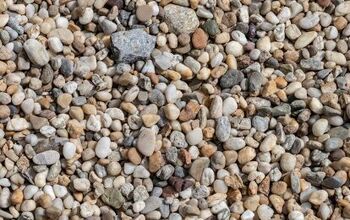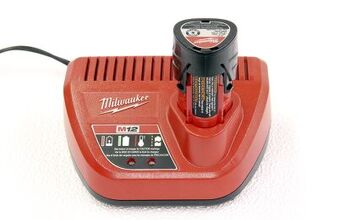DIY Mulch Ideas For Your Fall Garden

Fall is the ideal time of year for landscape maintenance and preparation for the cold and unforgiving winter to come. In addition to raking leaves and mowing the lawn for the last time, you need to start thinking about adding mulch. The good news is that there are numerous DIY mulch options available to help protect your garden without breaking the bank.
Some fantastic and free mulch options you can add to your fall garden include pine needles, dead leaves, and dried grass clippings. If you live in a volcanic region, find affordable lava stones or gravel. Seaweed is an option for those with coastal gardens. Shredded newspaper, wood chips, and straw are great, affordable mulch materials. Adding mulch in the fall adds nutrients to the soil and protects your plants.
While many associate fresh mulch with spring, it’s equally important to add mulch to your perennials in the fall. Mulch will help nourish and protect your plants through the harshest winter weather, and will keep your garden looking great, even when the plants are bare. Keep reading to learn the best DIY mulches you can use this fall, as well as why mulching at the end of the year is so crucial.
Five Reasons It’s Important To Add Fresh Mulch In The Autumn
1. Adds Nutrients
One of the top reasons why it’s smart to add fresh mulch in the fall is to replenish the soil's nutrients. Most organic and natural mulches contain vital nutrients that are slowly released in the soil as the organic matter breaks down. This gradual release ensures the soil your plants live in is never depleted of the essential ingredients for survival.
2. Provides Root Protection
Roots need protection, especially in the winter. Both fall and winter months bring high winds, severe weather, and cold temperatures. Extreme weather can expose roots and leave them particularly vulnerable if you don’t add mulch.
Adding this extra layer to the ground protects roots before the first frost hits, and gives them an increased chance of survival.
3. Insulation And Temperature Control
In addition to protecting a plant's roots, mulch also acts as an effective insulator throughout the year. In the summer, mulch keeps soil cool, and in the winter it keeps it warm. This is important for those who have tropical plants and live in climates with occasional overnight frosts.
Mulch can keep plants that are vulnerable to frost alive when temperatures linger close to freezing.
4. Weed Reduction
Weeds aren’t as active in the winter, but they grow in the fall and come back with gusto each spring. To help make weeding easier in the spring, ensure you add plenty of mulch in the fall. A thick layer of mulch will suppress weeds, making it more difficult for them to sprout from the ground.
5. Water Retention
Another important benefit of mulch is its ability to help retain water. To prevent your plants from drying out in the winter, add mulch, which prevents sunlight from drying out the soil. Some mulch absorbs water like a sponge, which helps you conserve water in your garden.
Nine DIY And Effective Mulch Ideas For Your Fall Garden
1. Dead Leaves
Money doesn’t grow on trees, but mulch does. For those who live in climates with four distinct seasons, there’s a good chance that a lot of dead leaves will land in your yard each autumn. Instead of disposing of these dead leaves, consider saving a large portion of them to use as mulch each fall.
Dead leaves provide all the benefits of a good natural mulch, from water retention to weed control. They are also high in nutrients that plants need, including potassium, nitrogen, and carbon.
When using dead leaves as mulch, place a thick layer of leaves, between 3 to 6 inches, to ensure the best results.
2. Pine Needles
Another mulch that falls directly from the sky is pine needles. Pine needle mulch is often considered one of the best types of mulch to use in a garden. One amazing thing about pine needles is that they break down slowly. This means it will last throughout the fall and winter, all while slowly releasing nutrients.
It is also lightweight, which will help keep your roots protected without weighing them down. While lightweight, pine needles are great at retaining moisture and suppressing weeds. If you have access to pine needles, then use them as mulch this fall.
3. DIY Wood Chips
If you’ve recently cut down a tree or have access to free lumber, then use it to your advantage. Wood chips are one of the most popular types of mulch for gardens, and it’s often possible to create wood chip mulch yourself or purchase it for cheap.
You can rent a wood chipper, or bring wood to someone who has one. Alternatively, check online marketplaces for locations with cheap or free mulch. Often, the only catch is that you must pick it up and scoop it yourself.
4. Lava Rock And Gravel
If you live in a desert or volcanic climate, then lava rock is a great long-lasting mulch option. Lava rock is particularly fantastic, as it is lighter than most rocks and also releases nutrients into the soil. If you have access to cheap (or free) lava rock, then it’s a great option for your garden.
Some gravel can be used as mulch, as it helps suppress weeds, prevent erosion, and protect roots. Avoid using heavy rocks, as they can compact soil and potentially damage roots. The good news is that this mulch alternative will last many years.
5. Dried Grass Clippings
If you bag your grass clippings each time you mow the lawn, then consider saving this dead grass towards the end of summer. Dried grass clippings are a nutrient-rich and natural mulch option for those looking to feed and protect plants in the fall and winter.
Dead grass decomposes quickly, which means you might need to add several applications throughout the fall and winter. Therefore, it’s best to add a two-inch layer of dead grass and replenish it as it begins to decompose and disappear.
6. Straw
If you live in a pastoral region where farms are plentiful, then you likely have access to cheap or free straw. Straw is used for everything from shelter to bedding, and even animal food. It can also be used as a cheap and lightweight mulch option in the fall.
Being hollow and lightweight, this mulch is particularly great at insulating soil and retaining moisture. It is also a great weed suppressant and root protector. If you have access to cheap straw, consider using it as a mulch this fall.
7. Shredded Newspaper
Newspapers in printed form aren’t as popular as they once were, but there are still plenty of free printed papers available. Once you finish reading the paper, you may want to save it. This is particularly true as summer draws to a close. This is because shredded newspaper can be used as mulch in the fall.
While man made, this mulch can be an effective mulch because it suppresses weeds and helps soil retain its moisture. It also decomposes naturally. If you use shredded newspapers as mulch, try to avoid paper with lots of colors, as these dyes may have toxins.
8. Seaweed
If you want to protect your coastal garden this fall, then seaweed might be the perfect mulch option for you. Seaweed has many incredible benefits. For one, it provides all the normal mulch benefits, including water retention, weed suppression, and nutrient replenishment.
Seaweed is also unique in that it is less likely to bring diseases to your garden, as it comes from the sea. Ensure you wash seaweed thoroughly, as salt and some microbes that live in seaweed can kill your garden.
9. Compost Mulch
If you have a compost pile, then consider putting it to use this fall. You can combine any of the mulch options above with your compost to enrich and stretch your mulch pile. Blending mulch and compost is a great way to keep your plants nourished in the fall and winter, and will ensure you have more than enough mulch to cover your garden.
Summing Up DIY Mulch Options For Your Fall Garden
Applying mulch to your outdoor landscaping is part of autumn garden maintenance. Mulch helps protect roots, insulate soil, and keep plants moist. It also helps suppress weeds and feed nutrients to your plants. Some great free and DIY mulch options that occur naturally include dead leaves, grass clippings, and pine needles. You can also use wood chips, lava rock, seaweed, hay, or shredded newspapers. If you have compost, remember you can add it to any mulch to boost its nutrient content.
Related Guides:
- How To Cover Above-Ground Tree Roots
- Helpful Tips To Keep Outdoor Plants Alive In The Winter
- Things To Remember When Pruning Your Plants

Tom Gaffey is an expert writer who currently resides in Washington D.C. Tom has a passion for real estate and home improvement writing, as well as travel and lifestyle writing. He lived the last twelve years in Hawaii where he worked closely with luxury resorts and event planners, mastering his knowledge of aesthetics and luxury products. This is where he found his passion for home improvement and a keen interest in DIY projects. Currently, Tom resides in Washington D.C, and also working on his debut fiction novel.
More by Tom Gaffey











![10 Best Zero Turn Mowers – [2022 Reviews & Ultimate Buyer's Guide]](https://cdn-fastly.upgradedhome.com/media/2023/07/31/9070522/10-best-zero-turn-mowers-2022-reviews-ultimate-buyer-s-guide.jpg?size=350x220)


![10 Best Scroll Saws for 2022 [Ultimate Reviews & Buyer's Guide]](https://cdn-fastly.upgradedhome.com/media/2023/07/31/9070684/10-best-scroll-saws-for-2022-ultimate-reviews-buyer-s-guide.jpg?size=350x220)









![Cost To Drill A Well [Pricing Per Foot & Cost By State]](https://cdn-fastly.upgradedhome.com/media/2023/07/31/9074980/cost-to-drill-a-well-pricing-per-foot-cost-by-state.jpg?size=350x220)


